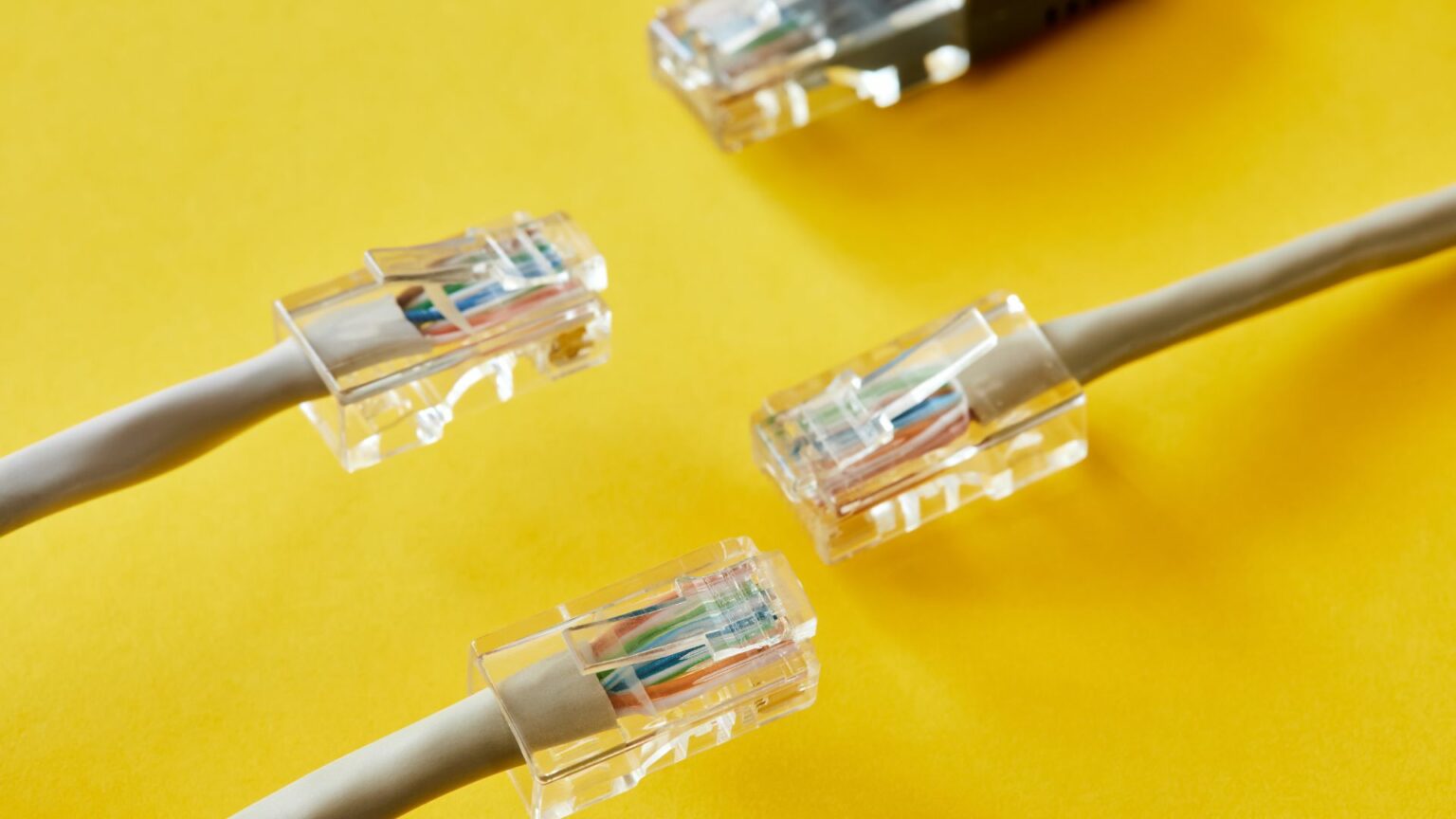When it comes to networking, the RJ45 Ethernet cable acts as the backbone for transmitting data between devices. However, not all Ethernet cables are created equally, newer Ethernet standards offer much quicker data transfer rates, but at a higher price.
But what is the difference between Ethernet standards, and is the increase in speed worth the improved performance? Here’s a detailed look at how they compare, starting from Cat6 up to the latest standard Cat8.
Ethernet Cable Standards:
Cat5 Ethernet Cable
Cat5, short for Category 5, was one of the earliest standards of Ethernet cables. It supports speeds up to 100 Mbps (megabits per second) and operates at a frequency of 100 MHz.
While you might see some Cat5 cables still in use in older networks, they have largely been replaced by Cat5e and newer standards, making them obsolete for newer, high-speed networks.
Considering Cat5e Ethernet cables are now sold at an affordable price, it’s recommended to bypass Cat5 cables and purchase a Cat5e or newer.
Pros:
- Cheapest Ethernet standard
Cons:
- Slower speeds
- Less reliable
Cat5e Ethernet Cable
Cat5e, or Category 5e, stands for “enhanced.” It is an improved version of Cat5 cables and offers higher performance and reduced crosstalk. Cat5e cables support speeds up to 1 Gbps (gigabit per second) and operate at a frequency of 100 MHz.
While Cat5e Ethernet cables have been well suited to residential and small business use, faster internet is now becoming increasingly more common, making it worthwhile investing in a newer Ethernet standard. But, if your internet provider only offers speeds less than 1Gbps, the Cat5e cable will do the job.
Cat5e may not be sufficient if you need 10G trunk lines between switches. While 1GB is enough for most computers, it may not be enough when connecting two 48-port switches together and all that traffic goes over a single port.
Pros:
- Best value for money
- Affordable price
Cons:
- Not good for super-speed connections
Cat6 Ethernet Cable
Cat6, or Category 6, represents a significant advancement in Ethernet cable technology. It supports speeds up to 10 Gbps and operates at a frequency of 250 MHz. Cat6 cables are designed to minimize interference and crosstalk, making them ideal for high-speed networking.
Cat6 Ethernet cables are commonly used in enterprise environments, data centers, and multimedia streaming setups.
While the Cat6 cable might be overkill for some small businesses and residential consumers, its high-speed capabilities and stability make it a great option for anyone looking to ensure their network remains future-proof.
Pros:
- Future-proof speeds
- More reliable than older standards
Cons:
- Price bump over Cat5e
Cat6a Ethernet Cable
Cat6a, or Category 6a, is an augmented version of Cat6 cables with improved performance and specifications. It supports higher speeds up to 10 Gbps over longer distances (up to 100 meters) and operates at a frequency of 500 MHz.
Cat6a cables feature thicker insulation and tighter twisted pairs, which help reduce signal degradation and ensure reliable performance in demanding environments.
Pros:
- Reduce signal degradation
- High speed over long distances
Cons:
- Overkill for residential
Cat7 Ethernet Cable
Cat7, or Category 7, is one of the latest standards in Ethernet cable technology. It supports speeds up to 10 Gbps over a distance of 100 meters and operates at a frequency of 600 MHz.
Cat7 cables are shielded to minimize electromagnetic interference and crosstalk, making them one of the best options for high-performance networking applications in commercial and industrial settings.
Pros:
- Reduced electromagnetic interference
- High speed over longer distances
Cons:
- More expensive per meter
- Low industry adoption
Cat8 Ethernet Cable
Cat8, or Category 8 is currently the latest Ethernet standard. It supports speeds up to 40Gbps and can support a bandwidth of up to 2GHz for a distance of up to 30 meters.
With PoE (Power over Ethernet) technology, Cat8 is the best choice for servers, as this can save space in server rooms by reducing the need for power cords.
If you’re looking for the right Ethernet standard for your home or small business setup, you might want to consider one of the older standards, as Cat8 can become expensive per meter, and is simply overkill, unless you’re running your own servers.
Pros:
- Extreme data transfer capabilities
Cons:
- Overkill for most consumers
- Lowest industry adoption
Which Ethernet Cable is Right for You?
Choosing the right RJ45 Ethernet cable standard depends on your specific networking requirements and budget.
While Cat5e cables are sufficient for most residential and small business networks, Cat6 and Cat6a cables offer higher performance and future-proofing for advanced applications.
Cat7 cables, although less common and more expensive, provide the highest level of performance and reliability for demanding environments. By understanding the differences between these standards, you can make informed decisions to ensure optimal network performance and scalability.
And finally, Cat8 cables, the latest RJ45 Ethernet standard offer incredible speeds and include PoE technology. But for most users, they’re simply not worth the added cost, unless you plan to purchase them for your server room.
If you’re looking to upgrade your networking capabilities, use the table above to help you get an overview of which Ethernet cable is right for your needs.




